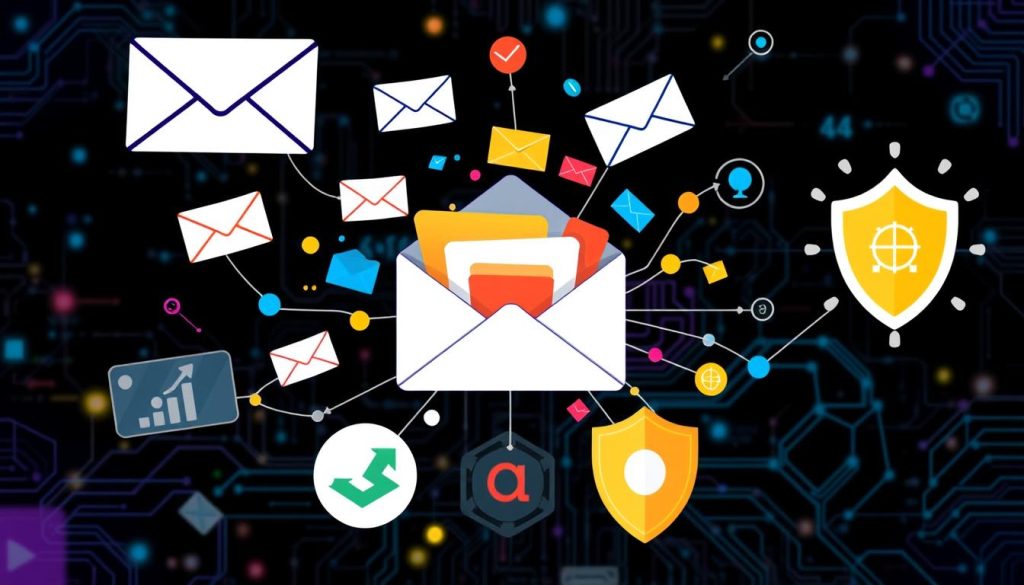Did you know 89% of marketers rely on email to get leads? This shows how can email marketing fuel your inbound strategy. To boost your inbound efforts, it’s vital to grasp the benefits of email marketing. It helps in engaging and converting leads, making it a strong tool for guiding them through their buying journey.
Using email marketing in your inbound strategy lets you craft tailored campaigns for your audience. This personal touch strengthens your lead relationships, boosting conversion chances. With email marketing, you can elevate your inbound strategy, achieving tangible business outcomes.
Table of Contents
Key Takeaways
- Email marketing is a vital part of an inbound marketing strategy
- Personalized and segmented email campaigns boost engagement and conversions
- Adding email marketing to your strategy nurtures leads through their journey
- Email marketing benefits include more leads and higher conversion rates
- A well-thought-out email marketing plan can improve your inbound strategy
- By using email marketing, you can deepen your audience connections
Understanding the Synergy Between Email Marketing and Inbound Strategy
Email marketing is key to inbound tactics. It lets you connect with your audience in a personal way. By adding email marketing to your inbound plan, you can spread your content further. This includes eBooks, webinars, and case studies, leading to more conversions.
Defining Inbound Marketing in the Digital Age
Inbound marketing puts the customer first. It’s about making content and experiences that draw and keep customers. Using email marketing in your inbound plan helps you grow leads, build trust, and show your brand’s expertise.
The Role of Email in Modern Inbound Tactics
Email marketing is essential in today’s inbound tactics. It lets you segment your audience, personalize your messages, and measure your campaigns’ success. With email marketing, you can craft campaigns that hit home with your audience and achieve real results.
Key Integration Points for Success
To make the most of email marketing integration, focus on these key areas:
- Align your email marketing with your overall inbound strategy
- Use email marketing to support content distribution and amplification
- Measure and optimize your email marketing campaigns for better results
By following these tips, you can unlock email marketing’s full power. This will elevate your inbound strategy to new heights.
The Power of Personalization in Email Campaigns
Creating an inbound email marketing strategy lets you send content that really speaks to your audience. This method answers the question of whether email marketing is inbound or outbound. It focuses on giving value to the recipient, not just sending messages. The key benefit is making messages personal, which makes them more impactful.
Personalizing your emails means sending content like blogs, guides, or updates that your audience will find interesting. This builds trust and shows your brand is a leader in your field. Some main perks of personalizing emails include:
- Higher engagement and open rates
- Better conversion rates and sales
- Stronger customer experience and loyalty
To personalize your emails, use data and analytics to segment your audience. This way, your messages will be spot-on and valuable, boosting chances of conversion and loyalty. Personalization is a powerful tool for an effective inbound email marketing strategy that brings real results.
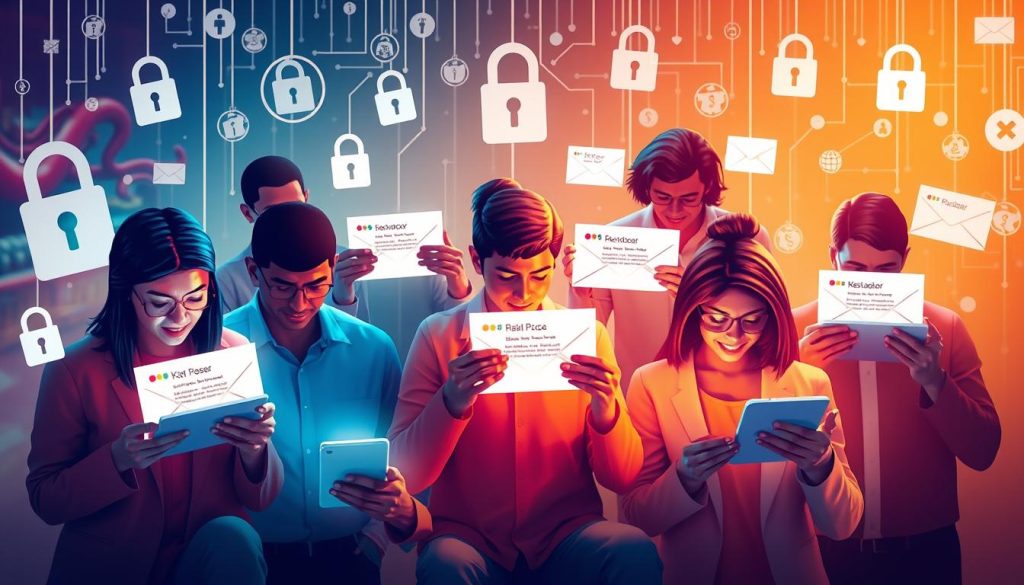
When crafting your email marketing plan, remember how vital personalization is. It helps you connect deeply with your audience. By giving value and relevance, you lay a solid base for lasting customer relationships and business growth.
Segmentation Strategies for Target Audience Engagement
Segmentation is vital in inbound email marketing. It means dividing your audience into smaller groups. These groups are based on demographics, behavior, or interests. This way, you can make campaigns that really speak to each group.
Is email marketing a marketing strategy? Yes, it is. And when done right, it’s very effective. Segmentation helps you send emails that are just right for each group. This makes people more likely to engage and convert.
Demographic Segmentation Techniques
Demographic segmentation sorts your audience by age, location, or job title. It’s great for making campaigns that really hit the mark for certain groups.
Behavioral Segmentation Approaches
Behavioral segmentation sorts your audience by what they do, like buying or engaging with your content. It’s perfect for nurturing leads and getting conversions.
Interest-Based List Management
Interest-based list management sorts your audience by what they like or need. It’s excellent for making campaigns that really speak to their interests.
| Segmentation Technique | Description |
|---|---|
| Demographic Segmentation | Divide audience based on demographics such as age, location, or job title |
| Behavioral Segmentation | Divide audience based on behavior such as purchase history or engagement |
| Interest-Based List Management | Divide audience based on interests or preferences |
Creating Content That Resonates With Your Email Subscribers
To succeed in email marketing, you must create content that speaks to your subscribers. What is email mainly used for in marketing is to teach and engage people, leading to more sales and loyalty. It’s important to understand what does inbound email mean to craft good email campaigns.
When making content, keep these points in mind:
- Relevance: Make sure your content matches what your subscribers are interested in and need.
- Engagement: Use catchy subject lines, introductions, and calls-to-action to grab your subscribers’ attention.
- Personalization: Personalize your content by addressing your subscribers by name and tailoring it to their likes.
By making content that resonates, you can boost engagement, drive sales, and build loyalty. 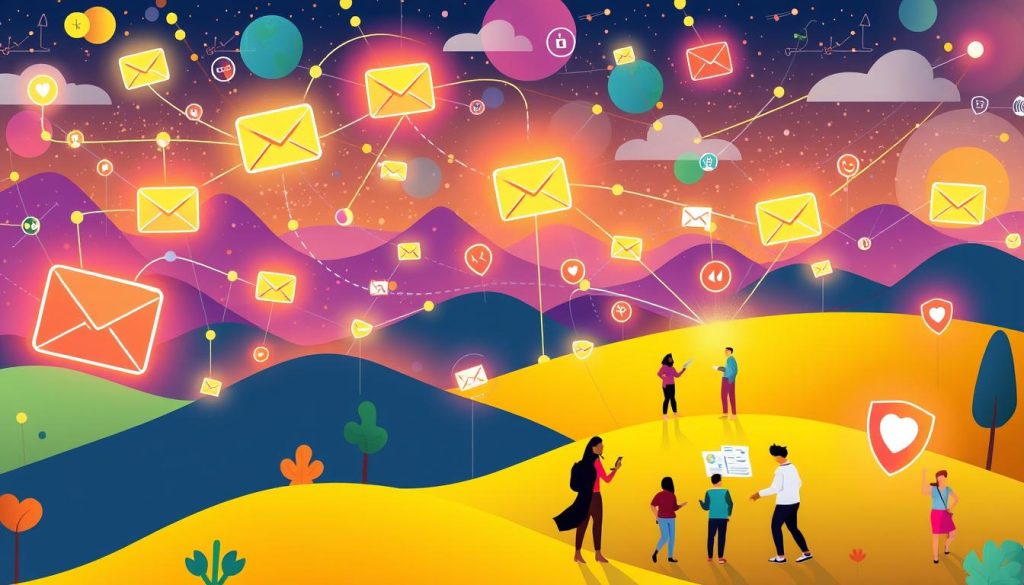
Creating content that resonates with your email subscribers is key to a successful email marketing campaign. By understanding what makes email marketing successful and what does inbound email mean, you can develop effective email campaigns that drive results.
| Content Type | Engagement Level | Conversion Rate |
|---|---|---|
| Personalized emails | High | 20% |
| Relevant content | Medium | 15% |
| Generic emails | Low | 5% |
Implementing Automated Email Marketing Workflows
When you’re planning your email marketing strategy, think about how automation can help. Unlike Google Ads, email marketing is all about building relationships with your audience. It’s great for personalizing messages and targeting specific groups, which helps in nurturing leads and boosting conversions.
Using email marketing can lead to more engagement, better conversion rates, and loyal customers. To get the most out of it, set up automated workflows. This includes drip campaigns, trigger-based emails, and automated responses.
Setting Up Drip Campaigns
Drip campaigns send a series of emails at set times. They help educate and nurture leads, leading to more conversions. To start a drip campaign, define your audience, create relevant emails, and use email software to automate sending.
Trigger-Based Email Sequences
Trigger-based emails send out based on actions or events. For instance, you can send a welcome email to new subscribers or a reminder for abandoned carts. These sequences improve your response time and boost conversion chances.
Automated Response Systems
Automated response systems send emails automatically. They can answer common questions, offer support, or follow up with leads. This saves time, boosts response rates, and enhances customer experience.
To make the most of your email marketing, track and analyze your results. Watch open rates, click-through rates, and conversion rates to see what works. Use data to improve your strategy and workflows for better results.
How Can Email Marketing Fuel Your Overall Inbound Strategy: A Practical Guide
Understanding what is the purpose of email marketing is key to using it well in your inbound strategy. Email marketing lets you talk directly to your audience. It helps you grow leads and get more conversions. Why is email marketing a good strategy? It lets you send messages that fit what your subscribers like and do.
Email marketing is great for keeping people engaged and loyal. Knowing what is the biggest advantage of email marketing helps you use it to boost your strategy. Some big benefits include:
- Targeted communication: Email lets you send specific messages to certain parts of your audience.
- Measurable results: You can track how well your email campaigns do, getting useful feedback.
- Cost-effective: Email marketing is cheaper than many other ways to promote your business.
Adding email marketing to your inbound strategy makes your marketing stronger and more focused. The main aim is to give value to your subscribers. This could be through helpful content, special deals, or updates about your company.
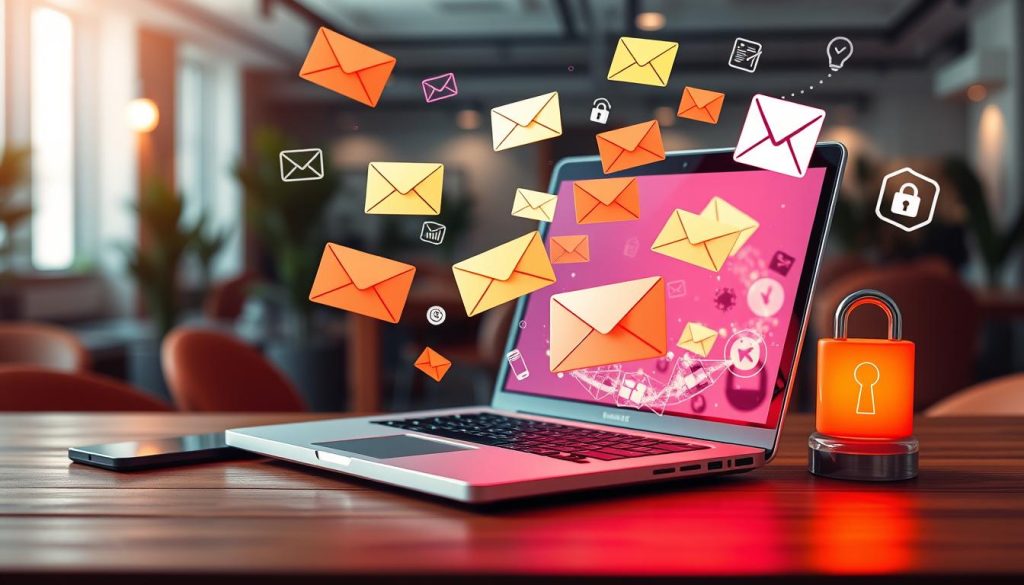
Measuring Success Through Email Analytics
To see how well your email marketing works, you need to check its success through email analytics. This means watching key numbers, looking at the data, and making your plans better. The main goal is to help leads grow by sending them strategic emails.
Knowing the usual benefits of inbound marketing helps make your emails better. Inbound marketing builds relationships with people who might buy from you. Email marketing is key in this. By using email processing, you can make your messages more personal, get more people to engage, and boost sales.
Key Performance Indicators
Some important things to watch include:
- Open rates
- Click-through rates
- Conversion rates
- Bounce rates
These numbers show how your emails are doing and where you can get better.
Data Analysis Best Practices
To make the most of your email data, follow these best practices. This means:
- Checking your numbers often
- Finding trends and patterns
- Trying new things to see what works
By doing these things, you can make your email marketing better and get better results.
Optimization Techniques
After looking at your data, you can use techniques to make your emails better. This includes:
| Technique | Description |
|---|---|
| A/B testing | Testing different versions of an email to see which one performs better |
| Segmentation | Dividing your email list into smaller groups to create more targeted campaigns |
| Personalization | Using data to create personalized messages that resonate with your audience |
Using these techniques, you can make your email marketing more effective and get real results.
Lead Nurturing Through Strategic Email Communications
Choosing the right email marketing is key for lead nurturing. It’s effective because it lets you send personalized messages. These messages can help turn leads into loyal customers.
To nurture leads well, send emails that match their interests and needs. This means
- Personalized content that solves their problems
- Offers that fit their current stage in the buying process
- Sequences of emails that add value and build trust
Using email marketing this way helps you build strong connections with leads. It also boosts the chance of them becoming customers. As
email marketing is an effective technique for lead nurturing, it’s essential to use it strategically
to get the best results.

| Lead Nurturing Strategy | Benefits |
|---|---|
| Personalized Content | Increased engagement and conversion rates |
| Targeted Offers | Improved relevance and response rates |
| Nurture Sequences | Builds trust and establishes thought leadership |
Content Distribution and Amplification via Email
When thinking about email marketing, consider how it helps spread your content. Email marketing is great for reaching your audience and getting them involved. By understanding its value, you can make a plan that fits your business.
Newsletter Strategy Development
A good newsletter can spread and boost your content. To make a newsletter plan, think about the email marketing tool you use. Consider how to make your content engaging. Some important things to think about include:
- Knowing who your audience is and making content they’ll like
- Using catchy subject lines and introductions to get more opens
- Adding calls-to-action to get people to take action
Content Promotion Techniques
There are other ways to promote your content too. You can use social media, paid ads, and work with influencers. Combining these with email marketing can make your content reach more people.
Resource Sharing Methods
Also, think about sharing resources to make your content more valuable. This could be blog posts, videos, or other content that’s relevant to your business and audience. Sharing useful content can make your business seen as a leader and engage your audience.
Re-engagement Campaigns for Inactive Subscribers
Why is email good for marketing? It’s because of re-engagement campaigns for inactive subscribers. These campaigns help bring back subscribers who haven’t interacted with your content. By sending personalized emails, you can reconnect with your audience and boost sales.
It’s also important to know how successful inbound marketing is. Inbound marketing creates content that your audience loves. Re-engagement campaigns are a key part of this. They offer timely and relevant content to get inactive subscribers back on board.
For example, a re-engagement campaign might offer special deals or free content to inactive subscribers. This could be a limited-time offer or a free resource. This approach can win back your audience and help increase sales.
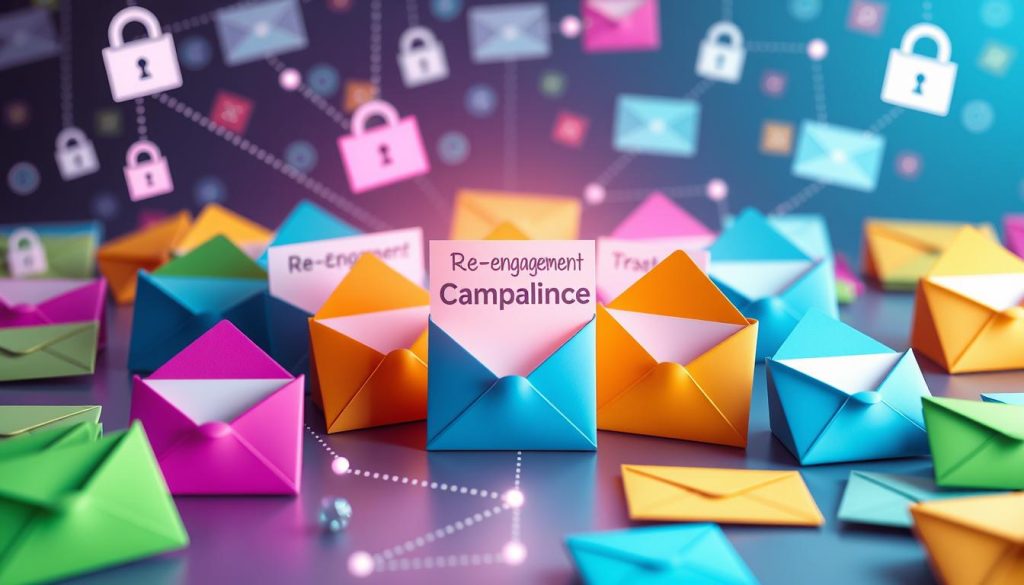
- Re-activating inactive subscribers
- Driving conversions
- Improving email open rates
- Enhancing customer engagement
Adding re-engagement campaigns to your marketing plan can make your email marketing better. It helps you reach your goals.
Customer Retention and Loyalty Programs
When deciding between inbound and outbound marketing, keeping current customers is key. Email marketing is a top way to do this. It helps build loyalty and advocacy. Choose an email platform that lets you personalize your messages.
Personalization makes customers feel special. Use data to send targeted campaigns. For example, offer exclusive offers and updates to make them feel part of a special group. VIP customer email strategies also work well, giving extra service to your most loyal customers.
VIP Customer Email Strategies
Some effective VIP customer email strategies include:
- Early access to new products or services
- Exclusive discounts and promotions
- Personalized recommendations based on purchase history
- Special invitations to events and webinars
These strategies help build strong customer relationships and keep them engaged with your brand.
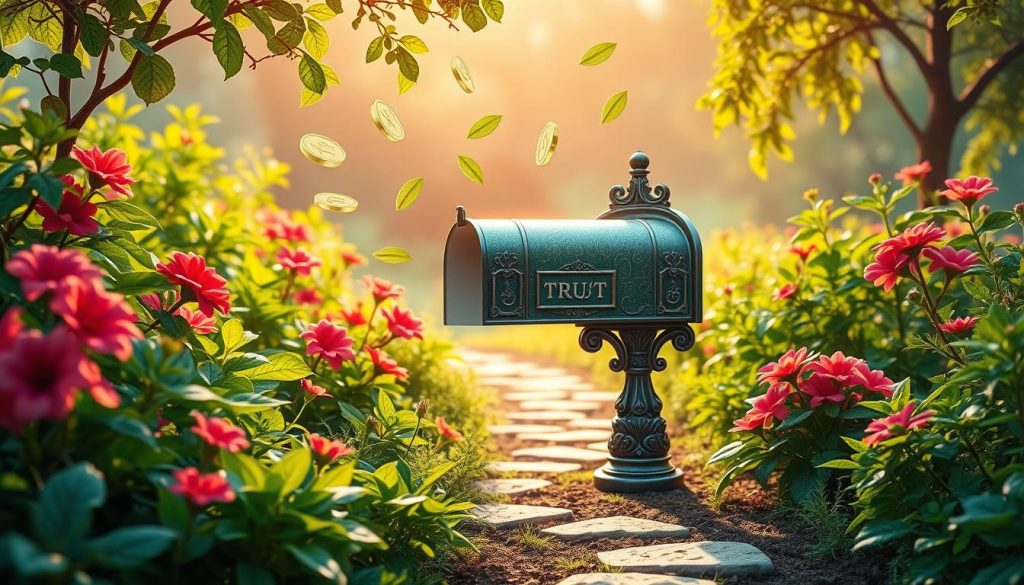
Exclusive Offer Campaigns
Exclusive offer campaigns boost loyalty and retention. They offer something unique and valuable, creating urgency. This works well with email marketing’s personalized and targeted features.
Integration with Other Marketing Channels
When thinking about inbound marketing leads, it’s key to link email marketing with other channels. This way, you can reach more people and boost your marketing. Use email to share your social media posts, drawing more visitors and fans.
It’s important to know why is email marketing important today. Email is a key part of marketing, helping you grow leads and connect with customers. By combining email with content and ads, you make a strong marketing plan.
To how can email marketing help with customer retention, consider these points:
- Personalized communication: Email lets you talk directly to customers, making content just for them.
- Regular updates: Keep customers in the loop with new stuff, services, or deals.
- Exclusive offers: Give special discounts or deals to loyal customers, making them feel special.
By linking email marketing with other channels, you build a strong strategy. This strategy drives success and helps you meet your business goals.
Testing and Optimization Strategies
As you work on your email marketing campaigns, it’s key to understand e-marketing goals. These goals should match your inbound strategy. Knowing why marketers use inbound marketing and its stages helps create better campaigns.
Improving your email marketing results involves several strategies. A/B testing is a key method. It compares two email versions to find the best one. This helps you refine subject lines, email content, and calls-to-action.
A/B Testing Methodologies
To make the most of A/B testing, first decide what to test, like subject lines or email designs. Then, send two versions to a small group of subscribers. Look at the results to see which one works better. Use this info to improve your future campaigns.
Continuous Improvement Processes
Along with A/B testing, ongoing improvement is vital. Regularly check your email metrics, like open and click-through rates. Make changes to boost performance. This way, you keep your campaigns effective and meet your goals.
By using these strategies, you can make email campaigns that meet your audience’s needs. These campaigns should drive real results for your business. Always keep your goals in mind and keep testing and optimizing to get the best return on investment.
Avoiding Common Email Marketing Pitfalls
When you’re setting up your email marketing plan, it’s key to know that is inbound marketing a pull strategy. It draws in customers with valuable content. To steer clear of common mistakes, think about what is inbound email action. It helps make your email campaigns work better. Also, understanding what is the role of inbound process can make your email marketing better and get more emails delivered.
To dodge spam filters and make sure your emails get through, keep these tips in mind:
- Make your emails personal to build trust with your readers
- Split your email list to reach the right people
- Make your email content better for more engagement
By using these tips and knowing the value of inbound email action, you can make email marketing campaigns that get results. The secret to great email marketing is to give value to your readers. Do this by making your content personal and relevant.
Conclusion: Maximizing Your Inbound Success Through Email Marketing
Email marketing is a key part of your inbound strategy. It helps you engage with your audience, grow leads, and keep customers coming back. The goal is to use email marketing with your other tactics to get the best results.
Looking into what is inbound email security, is email marketing a strategy, or the 5 advantages to using email marketing? This guide has the answers. Email is a vital tool for reaching your audience, boosting your brand, and driving sales.
Using email marketing well can help you reach your business goals. Keep improving, testing, and changing your approach. This will help you get the most out of this powerful marketing tool.

